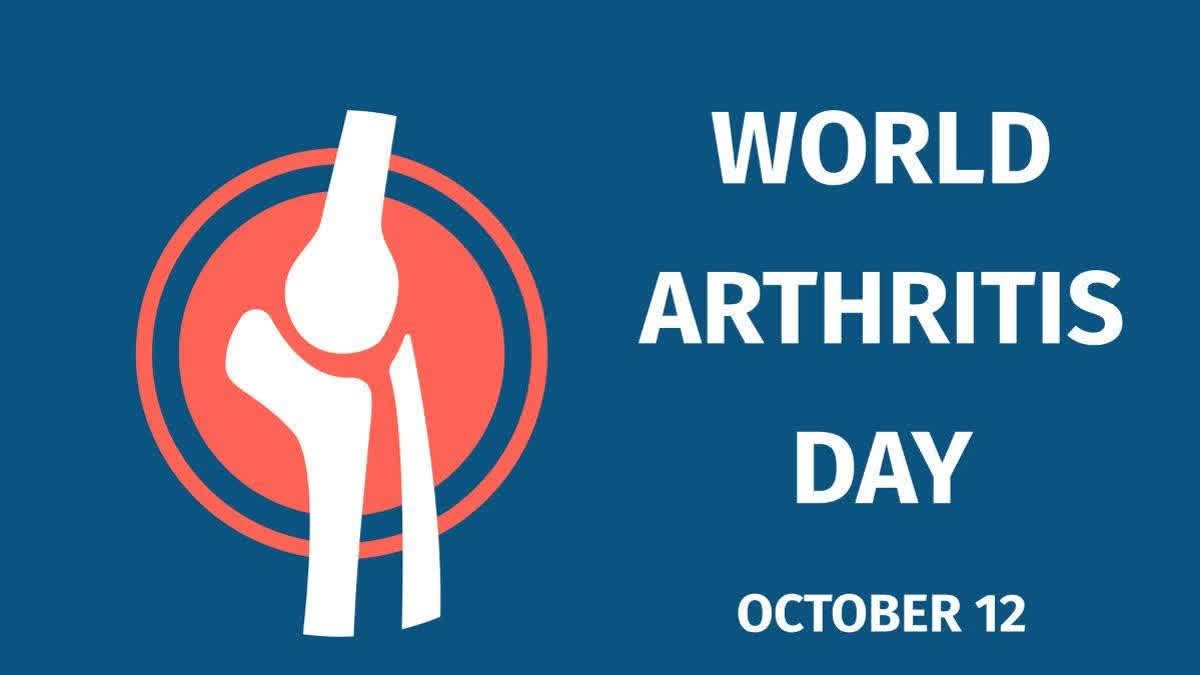New Delhi: The World Arthritis Day (WAD) is a global awareness day held every year on October 12 creating awareness about arthritis and its impact on one’s life and educating people about the symptoms and preventive measures. The day aims to help create awareness about rheumatic and musculoskeletal diseases (RMDs).
History & Significance
World Arthritis Day was initially announced by Arthritis and Rheumatism International (ARI) in 1996. The first World Arthritis Day was observed in the same year on October 12. Since then, several global communities like the Arthritis Foundation come together to create awareness against the disease and to fight the awareness gap, providing support and access to the communities, advocating for strong policies and supporting the research work.
The day educates people about the different forms of arthritis, its symptoms, preventive measures, and the importance of early diagnosis and treatment. It also advocates for greater support for those living with arthritis and encourages research into the prevention and cure of these conditions.
What is Arthritis
Arthritis is a condition that causes inflammation in the joints where two bones meet, such as the elbow or knee. There are many different types of arthritis with different causes and treatments. In some types, other organs, such as your eyes, heart, or skin, can also be affected. Common symptoms of arthritis include pain, redness, heat and swelling in joints.
Theme For 2024
The theme for 2024 World Arthritis Day is “Informed Choices, Better Outcomes”. The day’s focus is on the importance of access to accurate and trustworthy information to help people with arthritis make informed choices about their health.
Why are RMDs important?
RMDs are among the most prevalent, disabling, burdensome, and costly non-communicable diseases and this hidden crisis impacts the lives of over 120 million people of all ages in Europe alone. While healthcare has become a very visible topic of international discussion due to the COVID-19 pandemic, RMDs remain largely unknown and unaddressed throughout Europe and beyond, despite their seriousness and prevalence.
Prevention and Control
Several key prevention strategies have been proposed to prevent rheumatoid arthritis and control the disease progression. In particular, reducing exposure to inhaled silica, dust and occupational risks and lifestyle-related behaviours (prevention or stopping smoking, healthy nutrition, physical activity and maintaining normal body weight) play an important role.
WHO Findings
As per the latest WHO data, 18 million people worldwide were living with rheumatoid arthritis in 2019. About 70% of people living with rheumatoid arthritis are women, and 55% are older than 55 years. Over 13 million people with rheumatoid arthritis experience severity levels (moderate or severe) that could benefit from rehabilitation. While rheumatoid arthritis is a systemic autoimmune disease that affects multiple body systems, the joints of hands, wrists, feet, ankles, knees, shoulders and elbows are most often affected.



